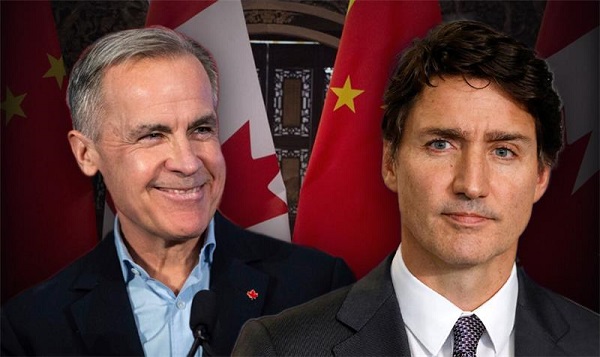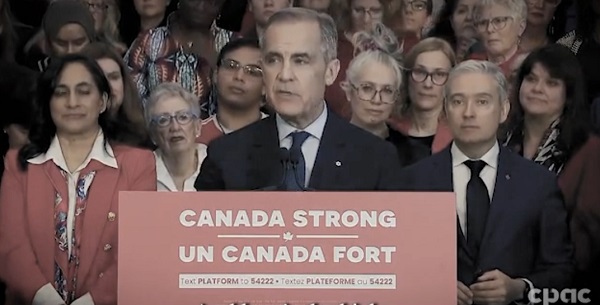Alberta
Politician booted by Alberta Conservatives for opposing LGBT agenda allowed back into party

From LifeSiteNews
An Alberta politician who was kicked out of her party for speaking out against the LGBT agenda in schools has been overwhelmingly voted back into the ruling United Conservative Party by caucus members.
In a statement Wednesday, the United Conservative Party (UCP) caucus under Premier Danielle Smith confirmed that after an internal vote, MLA Jennifer Johnson will again be a member of the party.
Today, following an internal caucus vote, United Conservative MLAs chose to welcome Lacombe-Ponoka MLA Jennifer Johnson into the United Conservative Caucus.
Read the news release here: https://t.co/OdB3FW3Ns6#ableg #abpoli pic.twitter.com/cwPNz0xyo6
— United Conservative Caucus (@UCPCaucus) October 9, 2024
“I am pleased to join the United Conservative Caucus, where I will be able to continue representing my constituents and help make life better for all Albertans,” Johnson said. “Over the past 17 months, I have grown both personally and professionally. Now, I am eager to apply what I have learned to benefit everyone who calls this province home.”
It is worth noting that Johnson won her seat after she was booted from the UCP, securing the backing of her constituents as an independent.
The UCP did mention that Johnson has met with “numerous groups and individuals from the LGBTQ+ community” since her election, and has “engaged on topics of importance to the community and is committed to continuing that work as a member of the government caucus.”
While Johnson did meet with various pro-LGBT activists, she seemed to do so without endorsing the opinions of those activists, with one video in particular going viral showing Johnson refusing to state that “trans women” – men who call themselves women – are real women.
Johnson’s refusal to go along with the demand that she affirm that men are women if they say they are even gained the attention of U.K. author J.K. Rowling.
Rowling, seemingly impressed with Johnson, posted a link of the video of Johnson and the activist and wrote, “It never seems to occur to them that there’s no bigger indicator of not being a woman than trying to bully people into agreeing you’re a woman.”
LifeSiteNews was given information from a well-connected member of the UCP, who asked to not be named, that many MLAs in the party supported Johnson and wanted her back in the party.
Smith slowly opened up to the demands of her caucus members who wanted Johnson back into the party, which led to the recent vote allowing her back in.
Regarding the incident with the transgender activist, Johnson made it clear that contrary to rumors, it was not Smith who ordered her to attend the meeting with the activists.
Johnson said that she “supports” the work of Smith and her UCP government and looks “forward to working with all Members of the Legislature in the fall session on the Parental Rights legislation and other important bills.”
While Smith has been largely soft on social issues of important to conservatives, earlier this year the premier did announce what is effectively the strongest pro-family legislation in the country, strengthening parental rights and protecting kids from life-altering so-called “top and bottom” surgeries as well as other extreme forms of transgender ideology.
Alberta
Made in Alberta! Province makes it easier to support local products with Buy Local program

Show your Alberta side. Buy Local. |
When the going gets tough, Albertans stick together. That’s why Alberta’s government is launching a new campaign to benefit hard-working Albertans.
Global uncertainty is threatening the livelihoods of hard-working Alberta farmers, ranchers, processors and their families. The ‘Buy Local’ campaign, recently launched by Alberta’s government, encourages consumers to eat, drink and buy local to show our unified support for the province’s agriculture and food industry.
The government’s ‘Buy Local’ campaign encourages consumers to buy products from Alberta’s hard-working farmers, ranchers and food processors that produce safe, nutritious food for Albertans, Canadians and the world.
“It’s time to let these hard-working Albertans know we have their back. Now, more than ever, we need to shop local and buy made-in-Alberta products. The next time you are grocery shopping or go out for dinner or a drink with your friends or family, support local to demonstrate your Alberta pride. We are pleased tariffs don’t impact the ag industry right now and will keep advocating for our ag industry.”
Alberta’s government supports consumer choice. We are providing tools to help folks easily identify Alberta- and Canadian-made foods and products. Choosing local products keeps Albertans’ hard-earned dollars in our province. Whether it is farm-fresh vegetables, potatoes, honey, craft beer, frozen food or our world-renowned beef, Alberta has an abundance of fresh foods produced right on our doorstep.
Quick facts
- This summer, Albertans can support local at more than 150 farmers’ markets across the province and meet the folks who make, bake and grow our food.
- In March 2023, the Alberta government launched the ‘Made in Alberta’ voluntary food and beverage labelling program to support local agriculture and food sectors.
- Through direct connections with processors, the program has created the momentum to continue expanding consumer awareness about the ‘Made in Alberta’ label to help shoppers quickly identify foods and beverages produced in our province.
- Made in Alberta product catalogue website
Related information
Alberta
Province to expand services provided by Alberta Sheriffs: New policing option for municipalities

Expanding municipal police service options |
Proposed amendments would help ensure Alberta’s evolving public safety needs are met while also giving municipalities more options for local policing.
As first announced with the introduction of the Public Safety Statutes Amendment Act, 2024, Alberta’s government is considering creating a new independent agency police service to assume the police-like duties currently performed by Alberta Sheriffs. If passed, Bill 49 would lay additional groundwork for the new police service.
Proposed amendments to the Police Act recognize the unique challenges faced by different communities and seek to empower local governments to adopt strategies that effectively respond to their specific safety concerns, enhancing overall public safety across the province.
If passed, Bill 49 would specify that the new agency would be a Crown corporation with an independent board of directors to oversee its day-to-day operations. The new agency would be operationally independent from the government, consistent with all police services in Alberta. Unlike the Alberta Sheriffs, officers in the new police service would be directly employed by the police service rather than by the government.
“With this bill, we are taking the necessary steps to address the unique public safety concerns in communities across Alberta. As we work towards creating an independent agency police service, we are providing an essential component of Alberta’s police framework for years to come. Our aim is for the new agency is to ensure that Albertans are safe in their communities and receive the best possible service when they need it most.”
Additional amendments would allow municipalities to select the new agency as their local police service once it becomes fully operational and the necessary standards, capacity and frameworks are in place. Alberta’s government is committed to ensuring the new agency works collaboratively with all police services to meet the province’s evolving public safety needs and improve law enforcement response times, particularly in rural communities. While the RCMP would remain the official provincial police service, municipalities would have a new option for their local policing needs.
Once established, the agency would strengthen Alberta’s existing policing model and complement the province’s current police services, which include the RCMP, Indigenous police services and municipal police. It would help fill gaps and ensure law enforcement resources are deployed efficiently across the province.
Related information
-

 Alberta2 days ago
Alberta2 days agoProvince to expand services provided by Alberta Sheriffs: New policing option for municipalities
-

 Bruce Dowbiggin1 day ago
Bruce Dowbiggin1 day agoIs HNIC Ready For The Winnipeg Jets To Be Canada’s Heroes?
-

 2025 Federal Election1 day ago
2025 Federal Election1 day agoCSIS Warned Beijing Would Brand Conservatives as Trumpian. Now Carney’s Campaign Is Doing It.
-

 Alberta2 days ago
Alberta2 days agoMade in Alberta! Province makes it easier to support local products with Buy Local program
-

 2025 Federal Election2 days ago
2025 Federal Election2 days agoNo Matter The Winner – My Canada Is Gone
-

 Health1 day ago
Health1 day agoHorrific and Deadly Effects of Antidepressants
-

 2025 Federal Election1 day ago
2025 Federal Election1 day agoCampaign 2025 : The Liberal Costed Platform – Taxpayer Funded Fiction
-

 2025 Federal Election1 day ago
2025 Federal Election1 day agoA Perfect Storm of Corruption, Foreign Interference, and National Security Failures

